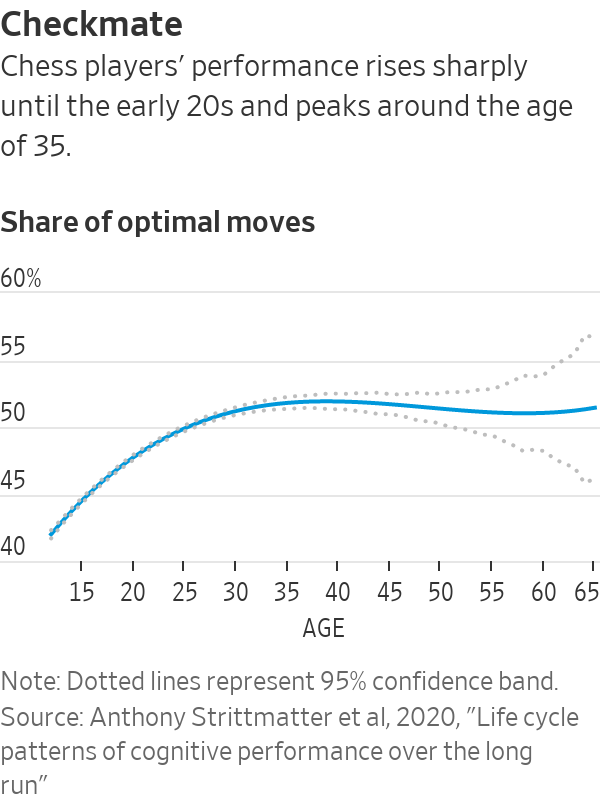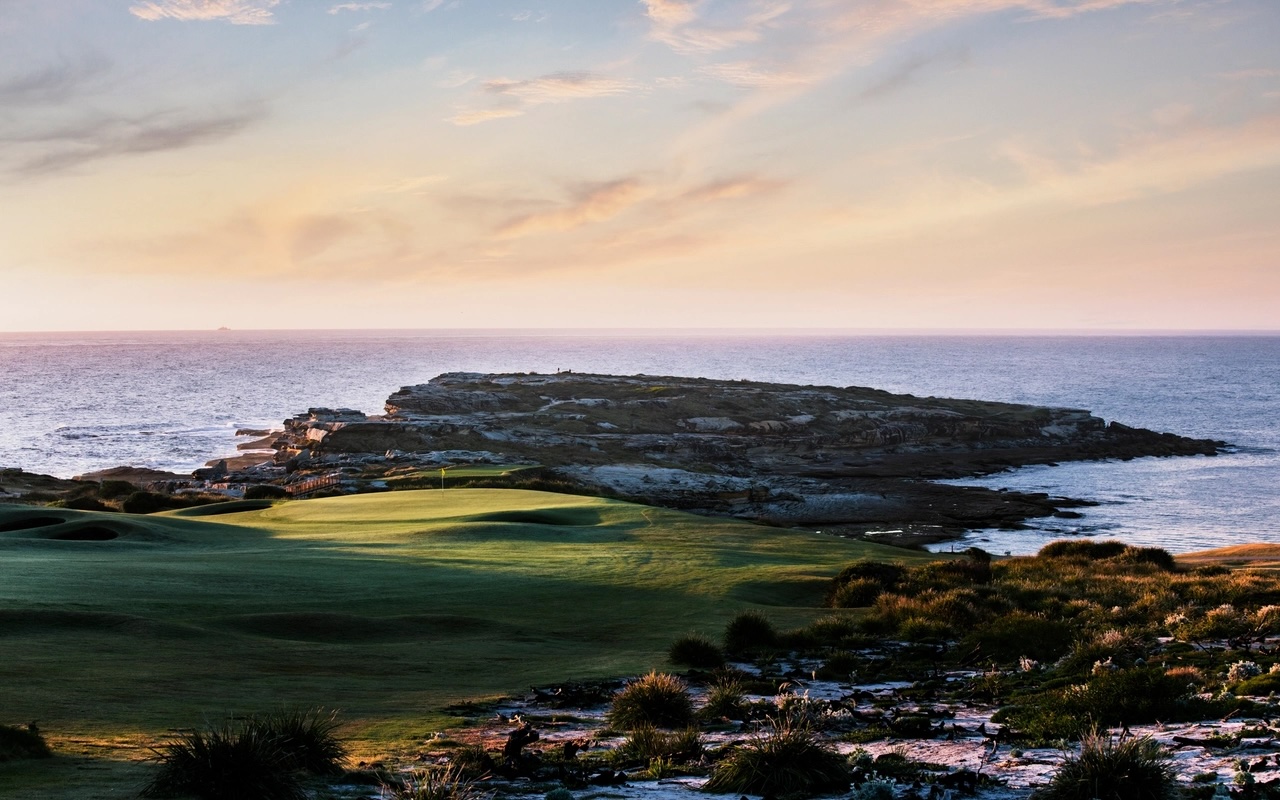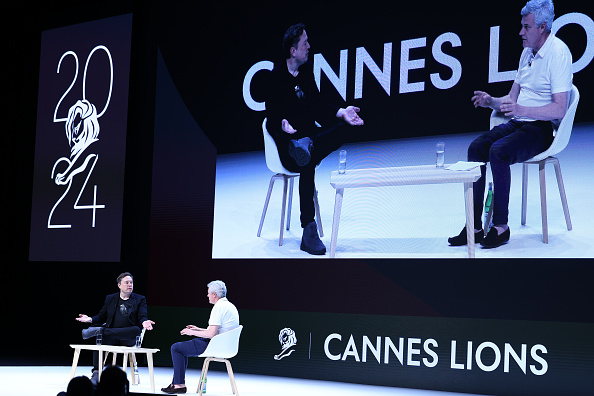Here’s When We Hit Our Physical and Mental Peaks
Even when we’ve peaked in one endeavour, we’re likely getting better in another
When are we our fastest, strongest and most creative?
Elite swimmers peak in their early 20s, powerlifters peak at 35 and equestrians later still, on average. Creativity peaks either very early in our careers or later, depending on how we think. Our ability to quickly absorb facts reaches its zenith in our late teens, while our vocabulary skills crest in our sixth decade.
Economists, sports scientists and psychologists have analysed Olympic performances and chess matches, as well as thousands of online quizzes to determine the average age when people peak mentally and physically. They are trying to understand how our brain and bodies work and if there are lessons on strengthening each.

The good news is that while we may have peaked in one endeavour, we are likely getting better in another.
“At every age, you are getting better at some things and worse at others,” says Joshua Hartshorne, an assistant professor of psychology at Boston College, who researches how various cognitive functions change with age.
People reach their various physical peaks at different times for different reasons, according to the studies. Fast-twitch muscle fibres help with speed and power—think sprinting—and are more prevalent in our muscles when we are young. Slow-twitch muscle fibres, which are those related to endurance, are more prevalent in muscles when we are older.
Physical attributes can play a role, too. Women have less muscle to lose, and peak at younger ages than men in muscle-intense sports like swimming.
The science on physical peaks
Rafal Chomik, an Australian economist at the ARC Centre of Excellence in Population Ageing Research, led a study of peak physical performances among Olympic and professional athletes looking at how well different age groups perform in different sports.
For sports like sprinting, which requires speed, power and maximum oxygen consumption, athletes tend to peak in their mid-20s. In endurance sports, such as marathons, the peak is typically reached by 40. In tactical low-impact sports, like sailing and equestrian competition, athletes compete at elite levels in their 50s.
This is consistent with findings on cognitive capacity, says Chomik, noting that young people are better at tasks requiring raw processing power while older people excel at strategy.
Another finding from the athlete study: Peak performance ages for elite athletes are increasing. For example, the average age of the top 100 men and women in tennis is four to six years older, respectively, than it was in the 1980s. Athletes are competing longer, due in part to advances in training, equipment and sports science.
Steffen Peters, an equestrian who lives in San Diego, has competed in five Olympic Games and won bronze medals in 1996 and in 2016. But he says he had his best year in the 2020 Olympics in Tokyo. At the age of 56, he was part of the silver-medal-winning U.S. Dressage Team.
“In my younger age, I had more energy,” says Peters. “But I think at an older age I have extra wisdom that goes pretty far.” Peters plans to compete in 2024 and 2028.
Reaching mental peaks
Mental peaks come at different ages, too. Most people associate creativity with youth, but it depends on the type of creativity, says Bruce Weinberg, a professor of economics at Ohio State University.
“Innovation tends to follow two distinct patterns,” says Weinberg, who co-wrote a study looking at the age when 31 Nobel Prize winners in economics published their most significant research, defined as the one with the most citations. One pattern of thinking is conceptual and the other is experimental.
Economists who challenge conventional wisdom and think more abstractly published their single most significant work at the age of 25. They would be considered conceptual thinkers. Economists who tend to refine their work based on accumulated knowledge and experience wrote their most significant paper in their mid-50s. They would be considered experimental thinkers.
Those same two innovation patterns emerged in studies of writers and artists, says Weinberg. Pablo Picasso, considered a conceptual artist, painted some of his most important works in his mid 20s. Robert Frost, a more experimental innovator, wrote for years before his first book of poetry was published around the age of 40.
Another study of peak mental performance involved the game of chess. Chess is considered a good proxy for “performance in a cognitively demanding task,” says Uwe Sunde, an economics professor at the Ludwig Maximilian University of Munich.
He and fellow researchers analysed 24,000 professional chess matches to track the performance of top players. The researchers compared an individual’s recorded moves with the best moves suggested by a modern chess computer, to see how a player’s performance changed over the years and when they peaked.
Individual performance rose sharply until the early 20s and peaked around the age of 35, says Sunde.
Not all thinking skills peak at the same time or the same age, says Hartshorne, of Boston College. Processing speed—the ability to think quickly and recall information like names—peaks around 18, based on data from standardised IQ and internet-based tests. Crystallised intelligence—the accumulation of facts and knowledge—peaks later. Vocabulary skills peak about 65.
In another study he led, using results of online grammar quizzes, he found that grammar and language-learning skills continue to build for about 30 years. For a native language, the 30-year learning period starts roughly around birth. For a second language, it starts whenever someone starts learning that language.
“Move to Paris and start speaking French at the age of 30 and you can expect continued improvement until you reach around 60,” he says. “Learning goes on longer than we might expect.”
 Copyright 2020, Dow Jones & Company, Inc. All Rights Reserved Worldwide. LEARN MORE
Copyright 2020, Dow Jones & Company, Inc. All Rights Reserved Worldwide. LEARN MORE
This stylish family home combines a classic palette and finishes with a flexible floorplan
Just 55 minutes from Sydney, make this your creative getaway located in the majestic Hawkesbury region.
More than one fifth of Australians are cutting back on the number of people they socialise with
Australian social circles are shrinking as more people look for ways to keep a lid on spending, a new survey has found.
New research from Finder found more than one fifth of respondents had dropped a friend or reduced their social circle because they were unable to afford the same levels of social activity. The survey questioned 1,041 people about how increasing concerns about affordability were affecting their social lives. The results showed 6 percent had cut ties with a friend, 16 percent were going out with fewer people and 26 percent were going to fewer events.
Expensive events such as hens’ parties and weddings were among the activities people were looking to avoid, indicating younger people were those most feeling the brunt of cost of living pressures. According to Canstar, the average cost of a wedding in NSW was between $37,108 to $41,245 and marginally lower in Victoria at $36, 358 to $37,430.
But not all age groups are curbing their social circle. While the survey found that 10 percent of Gen Z respondents had cut off a friend, only 2 percent of Baby Boomers had done similar.
Money expert at Finder, Rebecca Pike, said many had no choice but to prioritise necessities like bills over discretionary activities.
“Unfortunately, for some, social activities have become a luxury they can no longer afford,” she said.
This stylish family home combines a classic palette and finishes with a flexible floorplan
Just 55 minutes from Sydney, make this your creative getaway located in the majestic Hawkesbury region.






















